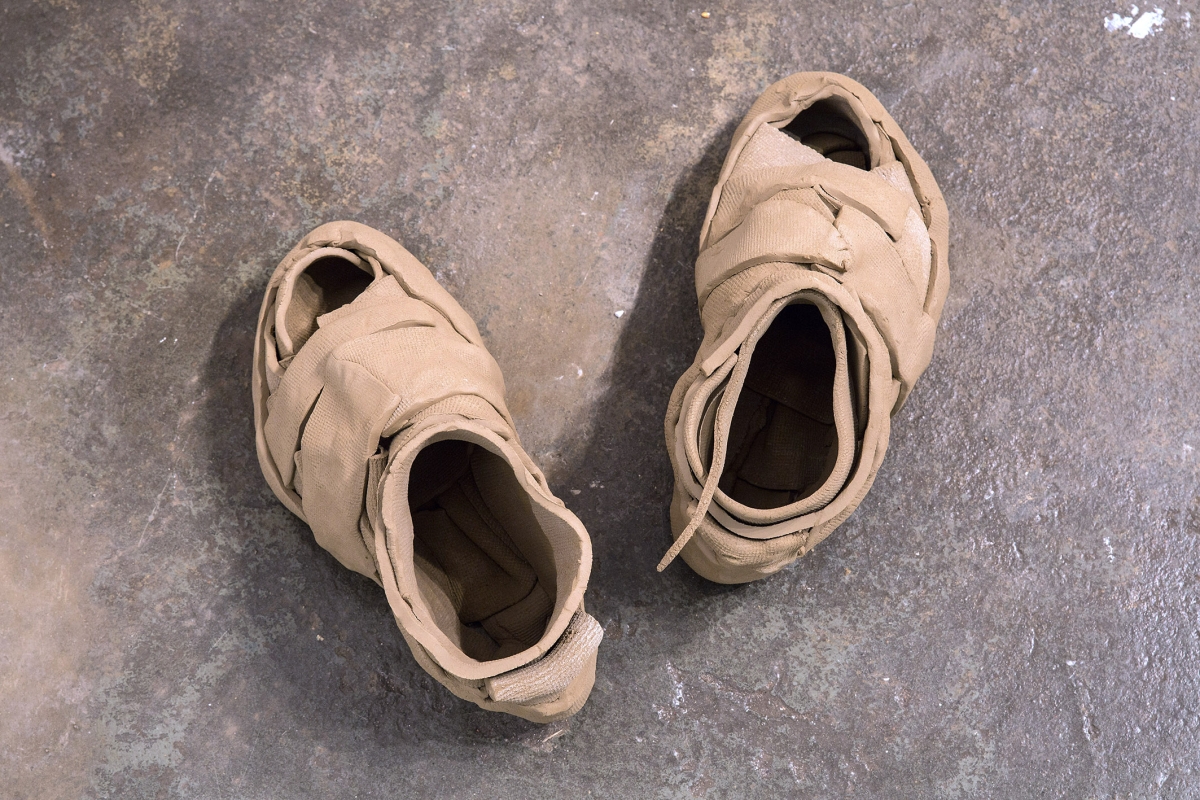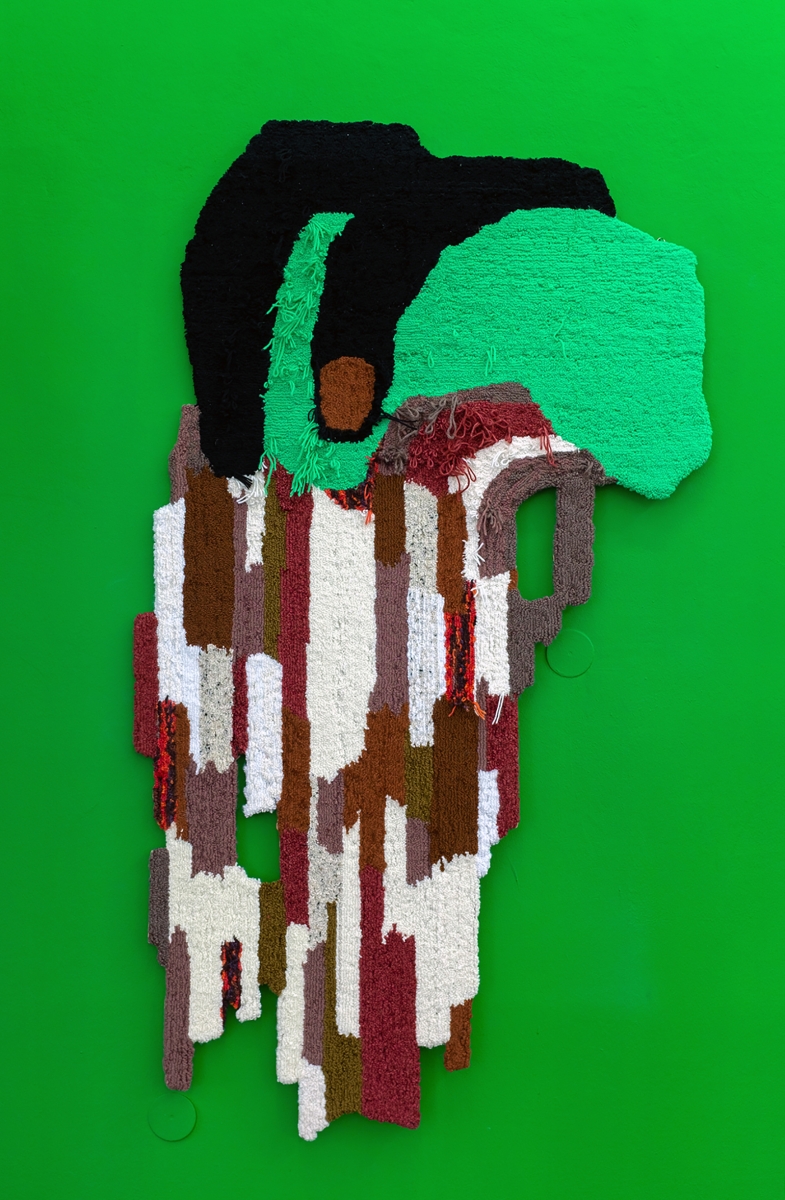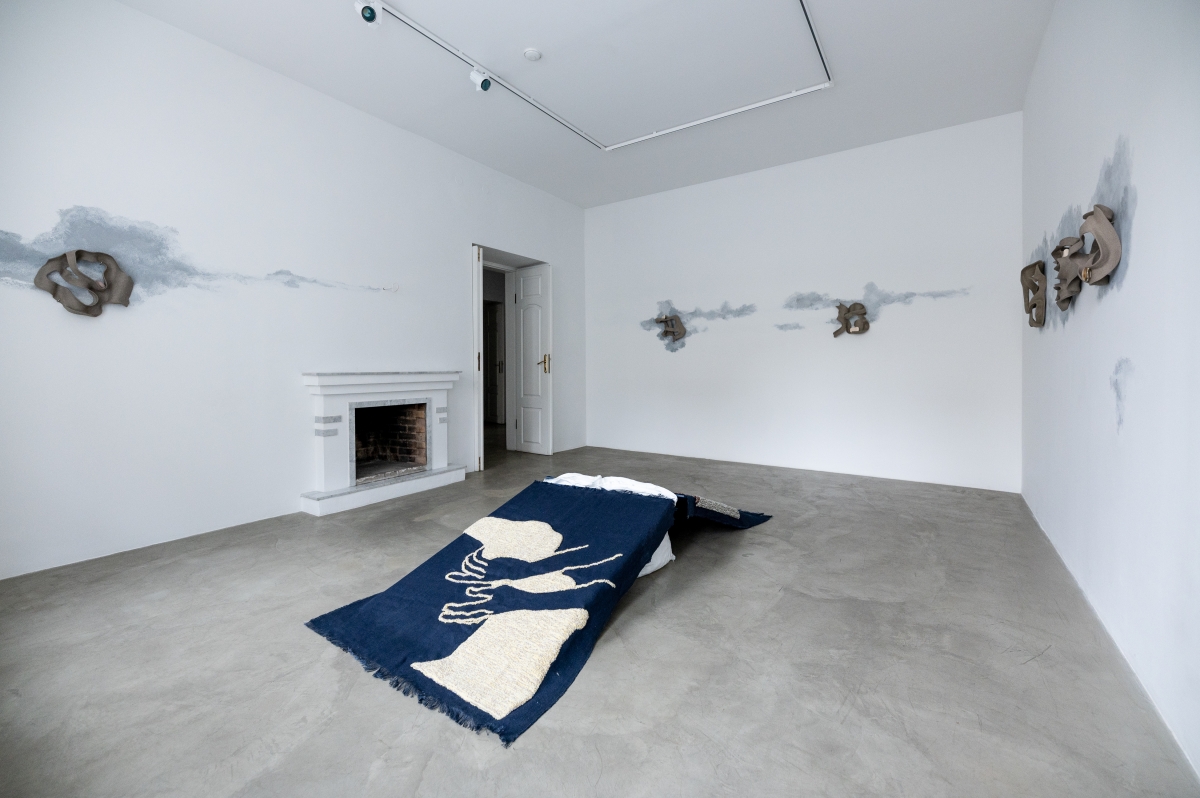Liisa Kaljula: Hi, Laura! The last time I interviewed you was for your 2016 solo show and catalogue Hundreds of Illusions Charted as Land at Tartu Art Museum. A lot of water has flowed under the bridge since then. What are you up to these days?
Laura Põld: Hi, Liisa! Yes, very true, 2016 seems not so long ago, but many things feel different today, as we live in turbulent times due to the Corona pandemic and the Russian invasion of Ukraine. I am currently working at the Estonian Academy of Arts, in the Sculpture and Installation Department, and in the Ceramics Department. Teaching somehow makes more sense straight after graduating from Linz University of Art and Design where I did my second MA in sculptural conceptions and ceramics between 2018 and 2021. Working with young artists every day gives me a feeling of belonging to a community that matters to me. I have slightly too many shows planned for the near future, and it is a lot to juggle everything, but I also have my favourite human (and dog) around me on a weekly basis, so it all somehow makes sense. There are many exciting shows coming up. Barbara Horwath invited me to be part of ‘Intimacy (Feelings are Facts)’, at Kunstverein Eisenstadt. The Kogo Gallery is taking my solo stand ‘Fibers in the Cave’ to Art Brussels this April. And in early May a group show is opening at Kumu, ‘Art in the Age of the Anthropocene’, where I work in collaboration with Lou Sheppard. I feel like there is both more structure and more chaos in my life; it is almost tolerable.

LauraPõld. Doing What They Do Best, 2021
LK: Back then you were living between Vienna and Tallinn. You are now more firmly based in Tallinn. How has this relocation to a more peripheral art centre affected your life as an artist?
LP: I like to think that I am still living between Tallinn and Vienna, as my partner is working in Vienna and we share our homes and life between the two places. But realistically speaking, I only visit and plan some projects in Vienna, and then make things happen in my studio in Tallinn with the help and budgets that are available to me in Estonia. Both the studio and the facilities in ARS and the work at EKA, and the institutions I am working with, offer me the feeling that the hard work is starting to pay off, and it feels as if it is possible to start projects and work with teams where work can be enjoyable and rewarding. I feel as if things happen with much less miscommunication and conflict when working in Tallinn. Even though Tallinn is a small place, the facilities for working are still the best I have experienced so far, studios are affordable, and production help is available.
LK: How has your practice changed over these last few years? You no longer paint as much as you used to, and tend to build from clay and weave yarn instead.
LP: It really impresses me when artists are free and open to a wide range of materialities, heavy and soft, light and grounded. I think the media I have worked with most are quite crafty, and getting better at them takes a long time, so I have to push myself to let go sometimes and go back to the starting point, and to consider everything and make decisions based on the current options. Yes, I think I was never much good as a painter; there were always tricks and additions that helped hide what I could not do with the brush. However, I still consider the work I make in textiles now as painting. With yarn, colour is back in the picture.

Exhibition ‘Translating and Co-labouring’ by Laura Põld at the Gallery (AV17). Photo: Evgenia Levin

Exhibition ‘Translating and Co-labouring’ by Laura Põld at the Gallery (AV17). Photo: Evgenia Levin
LK: So some things have stayed the same. You are still very active, both domestically as well as internationally. Last November you exhibited with Magdalena Franczak at the Austrian Culture Forum in Warsaw. In January your dialogue show with Andres Tolts ended at the Kogo Gallery, Tartu, and in February you opened a solo show at the AV17 Gallery in Vilnius. What did these last shows mean to you, and have you consciously worked more with our post-socialist region lately?
LP: I think I can feel a certain pride in knowing and belonging to different scenes. Working with the post-socialist region feels maybe more meaningful, and also there is more feedback and conversation taking place. Although the show in Warsaw was made possible due to me also being ‘based in Vienna’, yes, the other shows made practical sense during the time I was working in Tallinn and spending more time with my family and my grandmother who recently passed away. Also, it was more of a coincidence that those three shows took place in a row.
LK: Kogo and AV17 are both small private initiatives, whereas working with public art museums has always been part of your creative curriculum. You are now preparing a work together with Lou Sheppard for Kumu Art Museum’s big summer exhibition, devoted to the age of the Anthropocene. Tell us a bit about this new collaboration project!
LP: The work focuses on the Aru limestone quarry near Kunda in Estonia, with which I became acquainted in 2018 when I was residing in Kunda. The history of the Virumaa area and the mining in the region is one of the subjects of our work. The Canadian artist Lou Sheppard I met in 2019 during an ISCP residency in New York, and, based on our similar interests, we decided to collaborate. The theme of the forthcoming work draws on the history of mining and environmental activism (the Phosphorite War), and establishes a dialogue between the past in mining and its possible future scenarios. One part of the multimedia installation will be filmed at the Aru quarry, with a small choir performing a runo song against the backdrop of the harsh beauty of the quarry.

Laura Põld. Burrows. Flights, Gallery Hobusepea, Tallinn, 2019
LK: I am looking forward to seeing the final outcome in Kumu! You also teach in several departments of the Estonian Academy of Arts. Moving between fine art and applied art seems to have been your special path from the very beginning. Why do you want to have one foot in one discipline and one foot in another? Why do you need both?
LP: I don’t know if I want to have one foot in one and one foot in the other. Sometimes I have these moments when I wish I had no clearly fixed background, as it often just becomes limiting. Don’t we all want to be someone else for a change? While teaching, I see the two modes living ‘happily’ together. The crafts departments and the fine art departments are in the same building, and interweaving between the two worlds is taking place more and more. I feel that the fine art students have more freedom to go and play in the sandbox with the textile artists, ceramicists, etc. It might be tricky to use the same door in reverse.
LK: How have the crises of recent years affected your work as an artist? Some of my artist friends have not been able to work since the war broke out in Ukraine because their activist stance demands they act. So they spend a lot of time working as volunteers instead of making art.
LP: That’s a difficult question to answer. Clearly, there can always be more we can do to help. In my work with art students, I have also thought about different types of creators. Some people simply process everything in the studio, and work with difficult questions through their chosen materials. And some people function differently, the traumatic events surrounding them might draw them away from making art for a long time.
I am the first type. Difficult events push me towards starting new work; it’s rather an antisocial kind of activity, solitary, a way of processing.

Exhibition view from Shedding Skin – Laura Põld’s site-specific installation and Piret Karro’s texts. Gallery Vaal, Tallinn, 2020. Photo: Hedi Jaansoo

Exhibition view from Shedding Skin – Laura Põld’s site-specific installation and Piret Karro’s texts. Gallery Vaal, Tallinn, 2020. Photo: Hedi Jaansoo
LK: You have collaborated with several outstanding young curators lately: Maria Helen Känd and Šelda Pukite come to mind, and also Stanislaw Welbel and Kati Ilves, who are more established curators. What are the pros and cons of working with a curator who brings his or her own creative energy to the project? A lot of artists struggle with the curatorial era, as they feel they are losing control of their own game.
LP: Working with all of them has been great. It is easy to work with people who have a clear vision and who can communicate their ideas and needs clearly; they run the project, and I feel that our doings are relevant, visible and serious.
LK: You have also been working with choreographers and dancers lately. What have these collaborations given you? You used to work with poets. I vividly remember your collaborations with Katrin Väli and Piret Karro, and you have always been an avid reader and apt with words yourself. Is there some kind of bodily shift going on in your work, moving towards the more intuitive? Or is it about creating space for art? At the opening at the Kogo Gallery, the choreographer Sigrid Savi brought in a performative element that tied together the work of Laura Põld and Andres Tolts, as if creating a common space for two different artists: one female, the other male, one born in the 1980s, and the other in the 1940s.
LP: You put it so well there: creating space for art. There are many talented people around me, and the younger generation is quite different. Work is a great way to connect. I am often the initiator of those collaborations with other creators, and I’ve been lucky that many have said yes. Sometimes my studio is filled with talented souls, and we propose ideas, laugh and play. It is probably the most beautiful vibe I know; there is no happier mental space/place in my life. Not every collaboration is so great, of course, but there are moments that push me to follow my intuition. Performance art, happening in real life in front of the audience, can probably be the closest to moments that sometimes take place in the process, moments when everything makes sense.
Sigrid and I were working together with not much practice; we called each other and talked a lot about sounds and the presence of Andres Tolts. The opening performance included an audio recording of Andres Tolts speaking, and the rest somehow made sense for us; Sigrid taking poses, becoming compositions in the space that partly came from the explanations by Tolts. She will also perform at Art Brussels with me. I’m quite thrilled about that!
LK: You are very mobile as an artist, like a travelling troubadour;, but am I right that you still prefer to work site-specifically? For example, art residencies such as Yamanashi in Japan have always left a strong mark on your work. Do you see yourself as a cosmopolitan creative? And what are your residency plans for the years to come?
LP: After a little break due to the pandemic, I am again enjoying these opportunities very much. Over the summer I will spend time at the Ceramic Academy Gmunden in Austria, working on some ceramic sculptures based on old Estonian spells. I also have short residencies planned in the near future in Paris and Bonn.
The projects are connected with each other, and when one has a strong base, whether it be on a so-called periphery such as Tallinn, and a network that has developed over the years, it keeps things exciting and the logistics complicated.

View from the from the exhibition by Laura Põld and Andres Tolts at Kogo Gallery. Photo: Marje Eelma

View from the from the exhibition by Laura Põld and Andres Tolts at Kogo Gallery. Photo: Marje Eelma

View from the from the exhibition by Laura Põld and Andres Tolts at Kogo Gallery. Photo: Marje Eelma

LauraPõld. Doing What They Do Best, 2021

Exhibition ‘Translating and Co-labouring’ by Laura Põld at the Gallery (AV17). Photo: Evgenia Levin






























